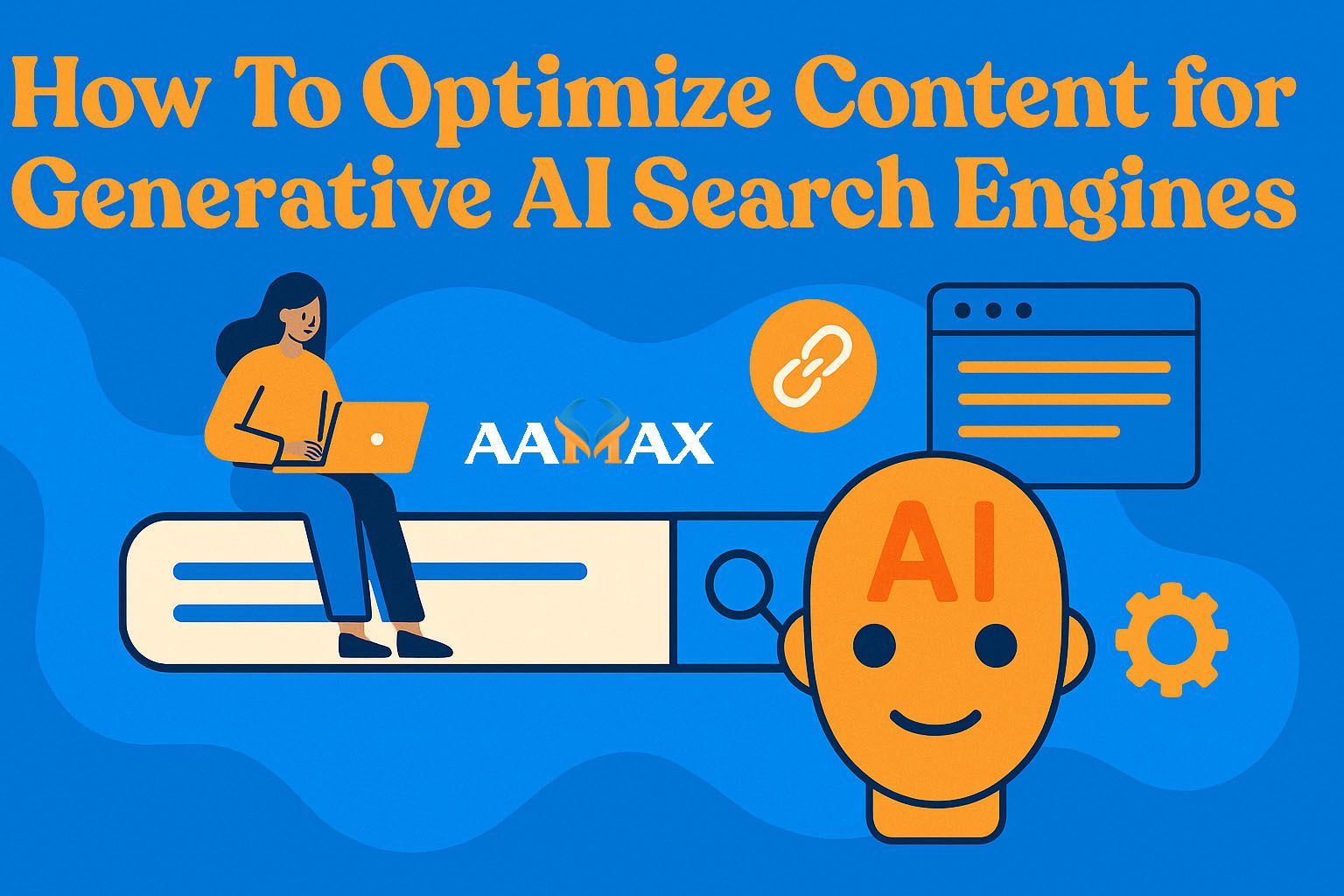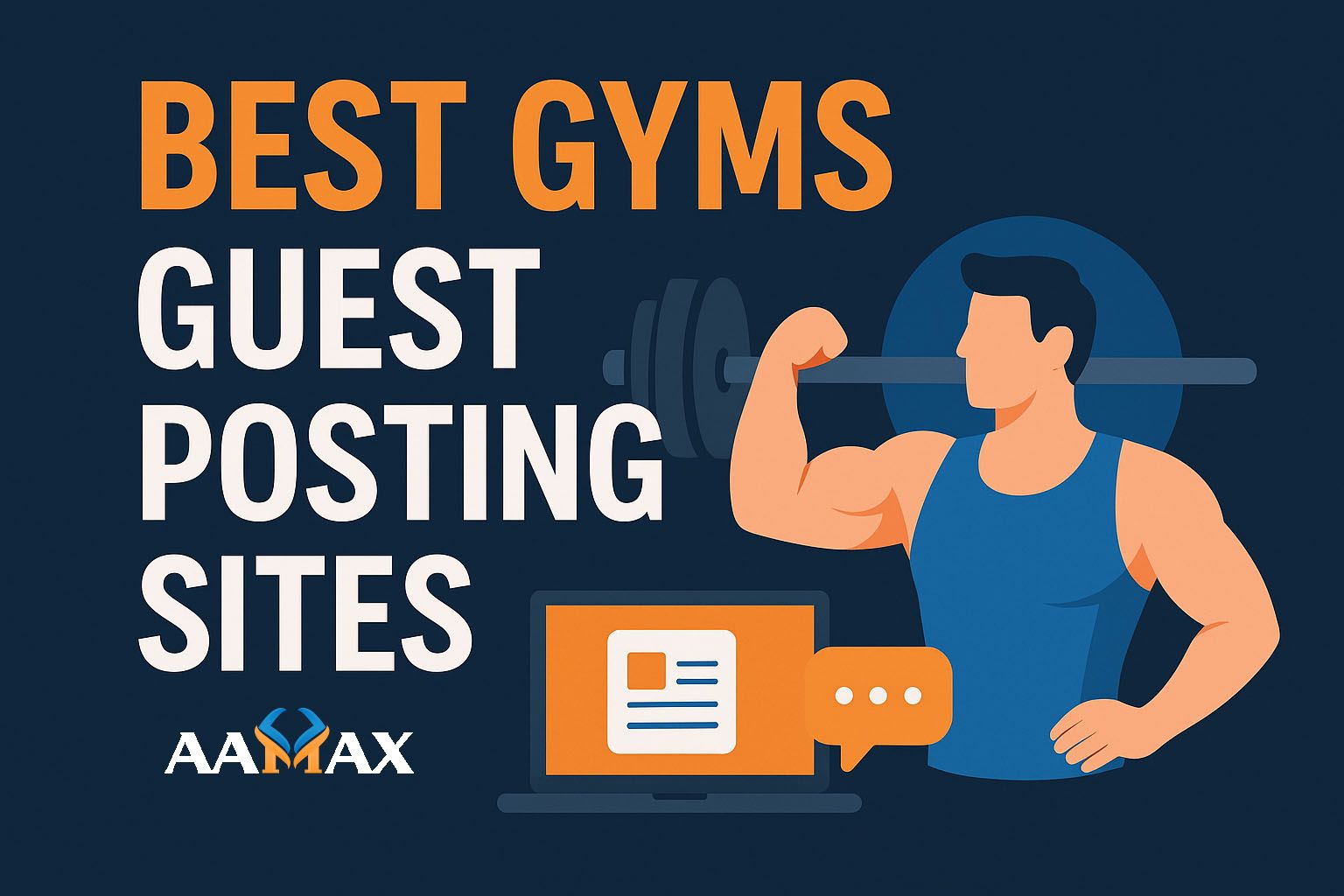
How To Optimize Content for Generative AI Search Engines
The search landscape is changing rapidly. Generative AI search engines — like ChatGPT, Google Gemini, Perplexity, and Anthropic Claude — are redefining how users discover information. Instead of browsing pages of search results, users now receive AI-generated summaries, recommendations, and contextual answers.
For content creators, marketers, and businesses, this evolution requires a new form of optimization: Generative Engine Optimization. This strategy focuses on making your content discoverable, understandable, and trustworthy to AI models that generate these answers.
In this detailed guide, we’ll explain how to optimize your content for generative AI search engines, the techniques that make your brand visible in AI responses, and how to future-proof your digital strategy for the age of AI-driven discovery.
What Is a Generative AI Search Engine?
A Generative AI search engine goes beyond keyword-based queries. It uses large language models (LLMs) to understand user intent, summarize data from multiple sources, and produce conversational answers.
Instead of showing 10 blue links, a generative engine like ChatGPT or Gemini synthesizes information into one intelligent, cohesive response.
For example, when a user asks, “What’s the best way to improve website performance?”, the AI generates a detailed answer that may include steps, comparisons, and recommendations — all drawn from high-quality, trusted online sources.
To appear in these AI-generated answers, your content must be structured, authoritative, context-rich, and optimized for generative systems.
Why Generative Engine Optimization Matters
Optimizing for generative AI search engines is essential because the way users consume information is evolving:
- Users are skipping traditional search results in favor of AI summaries.
- Brands not cited or mentioned in AI responses lose exposure even if they rank high in Google.
- Authority and factual accuracy are becoming critical for AI-driven systems.
Generative AI engines prioritize clarity, expertise, and structure. They don’t simply look for keywords — they interpret meaning, intent, and trustworthiness. If your content meets these standards, AI models are more likely to use your content as a source for their generated answers.
The Foundation: Understanding How AI Interprets Content
Before you can optimize your content, you must understand how AI models read and process it.
Generative AI doesn’t crawl the web the same way as Google. Instead, it uses training data, APIs, and indexed web content to learn from patterns and context. When you publish new content, these systems evaluate:
- Semantic relevance – Does the content clearly answer a question or explain a topic?
- Context and completeness – Does it include related information, examples, and reasoning?
- Authority and trust signals – Is the source reliable, verified, and consistent?
- Structure and formatting – Is the data machine-readable and organized logically?
These are the building blocks of effective Generative Engine Optimization (GEO).
Step-by-Step: How To Optimize Content for Generative AI Search Engines
Let’s explore the step-by-step process to make your content AI-friendly and visible in generative search results.
Step 1: Focus on User Intent, Not Just Keywords
Traditional SEO relied heavily on keywords and backlinks. Generative AI, however, focuses on intent and meaning.
Start by identifying:
- What problem your audience is trying to solve.
- The specific questions users ask about your topic.
- The context around those questions (why, how, when).
Then, structure your content to directly answer those queries. Use conversational language that mimics how real people ask questions.
Example: Instead of writing “Best SEO tools 2025,” create a section titled “What Are the Best SEO Tools to Use in 2025 and Why?”
Step 2: Structure Content for Machine Readability
AI models rely on structured and organized information to extract meaning effectively.
To make your content AI-friendly:
- Use clear headings (H1, H2, H3) to break down topics.
- Add ordered and unordered lists to present data logically.
- Use tables for comparisons or statistics.
- Include summaries or TL;DR sections to make content scannable.
- Write short, focused paragraphs that express one idea each.
Machine-readable content allows generative engines to interpret, summarize, and cite your content correctly.
Step 3: Implement Schema Markup and Structured Data
Structured data helps AI understand your content’s meaning and context. By adding Schema.org markup, you provide metadata that identifies what your page contains.
Recommended schema types include:
- Article – Defines author, date, and topic.
- FAQ – Highlights question-answer sections for AI parsing.
- Product – Adds pricing, availability, and reviews for e-commerce.
- Organization – Displays your company’s logo, contact, and social profiles.
- HowTo – Describes step-by-step guides and tutorials.
Using structured data increases your chances of being cited in AI-generated responses, especially when combined with authoritative content.
Step 4: Enhance Expertise and Authority (E-E-A-T)
Generative AI engines prefer credible, expert-driven content. This aligns with the E-E-A-T framework:
Experience, Expertise, Authoritativeness, and Trustworthiness.
To strengthen E-E-A-T:
- Include author bios with professional credentials.
- Link to credible sources and studies.
- Add real-world examples, data, or case studies.
- Use consistent brand information across all online platforms.
The more your content demonstrates credibility, the more likely it is to appear in AI-generated answers.
Step 5: Optimize for Conversational and Contextual Queries
Generative AI engines mimic natural conversation. They favor content that directly answers user questions in a conversational tone.
To optimize:
- Use long-tail, question-based phrases.
- Include FAQ sections addressing variations of common questions.
- Create comprehensive explanations rather than short answers.
- Provide follow-up context for related questions.
This helps AI engines pull complete, coherent answers from your website.
Step 6: Prioritize Accuracy and Fact-Checking
Generative engines penalize inaccurate or misleading content. They rely on trust and factual consistency.
Maintain accuracy by:
- Citing verifiable data sources.
- Updating outdated statistics or references regularly.
- Avoiding exaggerated claims.
- Using fact-based storytelling supported by evidence.
The more factual and well-documented your content is, the more likely AI systems are to treat it as reliable.
Step 7: Create Topic Clusters for Contextual Depth
Generative AI thrives on contextual relationships between topics. Instead of publishing random, disconnected articles, organize your content into topic clusters.
A topic cluster includes:
- A pillar page that covers a broad topic (e.g., “Generative Engine Optimization”).
- Multiple supporting articles that explore subtopics (e.g., “How GEO Impacts SEO,” “Tools for GEO,” “E-E-A-T in Generative Optimization”).
By interlinking these pages, you provide AI engines with context and demonstrate your expertise in a particular field.
Step 8: Optimize Multimedia for Multimodal AI
Generative engines are becoming multimodal, meaning they can analyze text, images, audio, and video. Optimizing multimedia ensures AI can process and understand all your content.
To optimize multimedia:
- Add alt text that describes the image contextually.
- Use structured data for videos with titles, captions, and transcripts.
- Optimize file names and metadata for clarity.
- Ensure videos have clear, keyword-rich descriptions.
This makes your visual content more likely to be recognized and referenced in AI outputs.
Step 9: Ensure Brand Consistency Across All Platforms
AI engines pull data from multiple online sources, including websites, social media, and directories. Inconsistent information can confuse AI systems and reduce credibility.
To maintain consistency:
- Keep business information (Name, Address, Phone) the same everywhere.
- Use identical logos, taglines, and brand messaging.
- Regularly update social media bios and web listings.
- Ensure your brand voice is consistent across all content formats.
This uniformity helps AI models associate your brand with a single, trusted identity.
Step 10: Improve Site Performance and Technical SEO
Even for generative AI engines, technical SEO still matters. Slow, poorly structured, or non-indexable sites reduce visibility.
Focus on:
- Fast page loading times.
- Mobile-first design and responsive layouts.
- Clean URLs and XML sitemaps.
- Proper internal linking for contextual flow.
- Secure HTTPS connections for trust signals.
A technically sound website provides a better foundation for generative visibility.
Advanced Techniques to Optimize for Generative AI Search Engines
Beyond the basics, you can implement advanced strategies that position your content for success in AI-driven environments.
1. Create Human-AI Collaborative Content
Generative engines favor content that combines human insight with AI-structured formatting. Use AI tools for drafting outlines, FAQs, or schema, then refine the text manually for accuracy and tone.
2. Build Author and Brand Knowledge Graphs
Generative engines like Google Gemini and ChatGPT rely on knowledge graphs to understand entities. To strengthen your graph presence:
- Use structured data to define your brand and authors.
- Maintain profiles on credible databases (e.g., Wikidata, Crunchbase).
- Link consistent author bios across publications.
This helps AI engines associate your brand with expertise and context.
3. Focus on “AI-Friendly” Content Length and Depth
Short posts often lack the context AI systems need. Write in-depth, detailed content (1,500+ words) that provides comprehensive coverage, examples, and FAQs.
The richer the information, the more usable it becomes for AI responses.
4. Encourage External Mentions and Citations
AI models give weight to external validation. When other websites or publications cite your brand or content, it reinforces your authority.
- Publish guest posts or expert opinions.
- Earn links from reputable directories.
- Get featured in media coverage or interviews.
These signals strengthen your credibility in the generative ecosystem.
Common Mistakes to Avoid in Generative Optimization
When optimizing for generative AI search engines, steer clear of these errors:
- Keyword stuffing instead of semantic optimization.
- Overusing automation tools without human review.
- Neglecting structured data markup.
- Publishing low-quality or incomplete content.
- Inconsistent brand data across platforms.
Effective GEO is about clarity, authority, and relevance — not shortcuts.
The Future of Content Optimization for AI Search
Generative AI is transforming how users interact with online information. In the near future:
- Search results will become more conversational.
- Voice and visual searches will integrate with generative responses.
- Personalized AI recommendations will replace traditional search listings.
By optimizing your content now, you prepare your brand for this new AI-first ecosystem.
Partner with Experts for Generative Optimization Success
Implementing effective GEO strategies requires technical expertise, structured content creation, and ongoing optimization. If you’re looking for professional assistance, you can hire AAMAX — a full-service digital marketing company offering Web Development, Digital Marketing, and SEO Services. Their team can help you build a future-ready online presence optimized for AI-driven search.
Conclusion
Generative AI search engines represent the next frontier in digital discovery. By optimizing your content for context, structure, authority, and factual accuracy, you can ensure that AI models recognize, trust, and feature your brand in their responses.
Whether you’re a business owner, content creator, or digital strategist, mastering Generative Engine Optimization will be the key to staying visible and relevant in the era of intelligent search.







